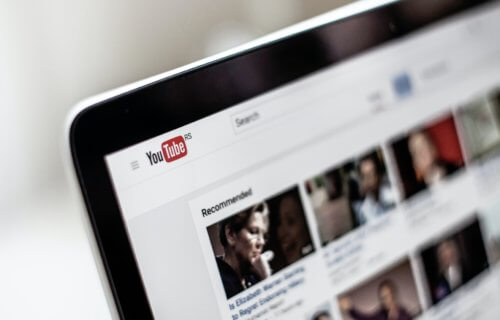COLCHESTER, England — Prejudice and callousness toward others’ struggles is a problem as old as any other. Humans are capable of incredible kindness, but we can also be very cruel. New research out of the University of Essex reports that spending just a little while on YouTube can go a long way toward reducing prejudice towards mental health.
Study authors report that 17 minutes spent on YouTube watching people talk candidly about their struggles with mental health led to subjects’ prejudice towards mental health conditions falling by eight percent, and intergroup anxiety levels dropping by 11 percent. The research team originally set out to analyze and explore how connections felt by people towards YouTube creators they watch — referred to as parasocial relationships — may impact subsequent behavior.
For this project, hundreds of people were asked to watch videos of a woman discussing her borderline personality disorder (BPD) diagnosis, as well as common misconceptions about the condition. After just 17 minutes of watching the woman, reported levels of explicit prejudice and intergroup anxiety dropped.
What’s more, a follow-up survey conducted a week later shows that those lower prejudice levels were still present. Also, about 10 percent of study subjects had even taken actions to support various mental health initiatives, such as fundraising.
“This is an exciting piece of research which is vital considering the impact online content has on people’s lives. There are more than 2.5 billion active users on YouTube every month and it can have a huge impact on the global conversation,” says study leader Dr. Shaaba Lotun in a media release. “We wanted to see if a creator talking about their mental health disorder could positively impact the people watching them. It seems this is the case, and signs that lower levels of prejudice have a long-term impact is an exciting avenue to explore.”
Mental health stigmas and prejudice muddle how people view others
This study encompassed a total of 333 participants with an average age of 26 years old. All subjects participated in an online survey, and the gender breakdown was as follows:191 women, 126 men, and three non-binary individuals.
Subjects were split into three groups and shown different videos. Only one cohort was shown the content about the creator disclosing her BDP diagnosis. Next, all participants completed a series of tasks intended to measure both their perceptions of BPD and general mental health conditions. A week later, a follow-up survey was also conducted.
Moving forward, researchers would like to expand the scope of their work to include how parasocial relationships and online content may influence perceptions of the LGBTQ+ community, or any other minority community for that matter.
“News presenters, fictional characters, social media creators – everyone forms one-sided relationships with the world around them. Over 250 million hours of video are watched on YouTube every day, and social media allows people from all communities to share their stories on their own terms,” Dr. Lotun concludes. “Obviously there is a flip-side to the positives this can bring, with bad faith creators able to stir up prejudice and spread hate.
“A lot has been written and reported on the negative effect social media can have on all of our lives, but I wanted to see if it could also be harnessed as a tool to improve society. It’s exciting to explore the large-scale positive impact this might have to increase understanding and decrease prejudice within society.”
The study is published in Scientific Reports.

Why would anyone be prejudiced toward mental health?